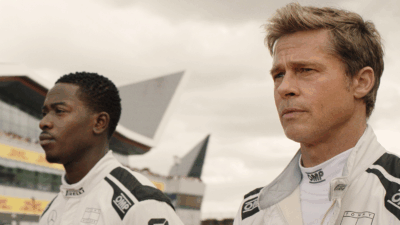Has Fox Turned Tubi into a Streaming Success?
The service has grown to 74 million monthly active users, a bigger audience than the Max paid-subscription platform.

Sign up for smart news, insights, and analysis on the biggest financial stories of the day.
Lachlan Murdoch is hoping Tubi will do to streaming what streamers did to television, which had been very kind to him and his family.
Last week, at the TV industry’s annual “upfronts” event with advertisers, the Fox CEO pitched the massive — and perhaps surprising — growth of its free streaming service, an example of the increasingly popular FAST (free ad-supported streaming television) platform.
But just how big a force is Tubi, exactly?
FAST and Furious
When Fox cashed out most of its entertainment assets in the 2019 Disney sale, the firm was arguably in the wilderness (albeit with a giant mountain of fresh capital). While still strong, its remaining portfolio — primarily cable networks Fox News and Fox Sports 1, a slew of regional sports networks, and the Fox broadcast network — remained ensnared in linear TV’s decaying infrastructure, and hyper-dependent on cyclical events like elections and the Super Bowl. With virtually no high-value intellectual property and little production capacity for original content, Fox slid into the streaming space in 2020 with its $440 million all-cash acquisition of Tubi.
The platform has succeeded — at least by streaming standards. In its most recent earnings call, Fox said the service had grown to 74 million monthly active users, giving it a bigger audience than Warner Bros. Discovery’s Max paid-subscription service. According to Nielsen’s Media Distribution Gauge, Tubi scored nearly as much screen time as Disney+ in April, and more than Max, Peacock, and Paramount+. It’s enough to make Tubi “the most valuable asset” Fox owns, Doug Arthur, managing director and research analyst at Huber Research Partners, told The Daily Upside.
Tubi’s selling point of being free helps explain its growth:
- Tubi says 63% of its audience are either cord-cutters or “cord nevers,” while 40% don’t subscribe to any other streaming service. Translation: Here lies Gen Z.
- In a recent Puck podcast appearance, Tubi CEO Anjali Sud made exactly that pitch to advertisers: Come to Tubi for the Gen Z crowd, stay for a space far more brand-safe than social media.
Fox Hole: Like many streaming services, Tubi remains “on the path to profitability” (Fox doesn’t break out Tubi’s financials, but one analyst told The Daily Upside they’d estimate its annual revenue has jumped to more than $1 billion from less than $150 million in 2020). As competitors spend billions to keep content flowing, Tubi has instead almost entirely opted to stock its biggest-in-the-industry library with cheaper licensed content. Cash-starved WBD has even handed over some IP crown jewels in a revenue-sharing model, including HBO programming and DC superhero movies. Another revenue-sharing program lets independent filmmakers upload movies. In other words, Tubi is one part syndicated TV, and one part YouTube-alternative for creators. It’s what Lachlan Murdoch’s fictional counterpart Kendall Roy might call “a lifeboat.”











